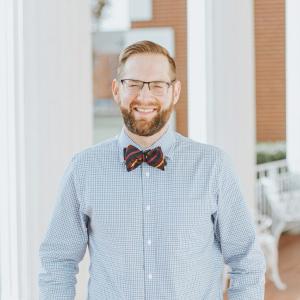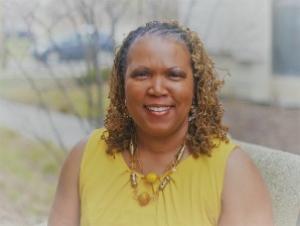Resources

With almost no leaves in the canopy above us, sunlight flooded the gently sloping hillside, penetrating and illuminating every open space in the leaf litter. My students and I had just spent some time—I don’t know exactly how long—inspecting a Dark Fishing Spider (Dolomedes tenebrosus) who was absorbing the warmth on the smooth gray bark of an American Beech (Fagus grandifolia). The spider—stretched out like a stereotypical beach bum—seemed to be enjoying the early spring warmth as much, if not more, than we were.“This doesn’t even feel like class,” one of my students exclaimed, taking a seat in the crunchy oak and hickory leaves. Indeed it didn’t. I had hoped for this.That experience was just one of countless precious memories during my first semester teaching Creaturely Theology in the spring of 2023. That course, an upper-level undergraduate theology elective, weds theological reflection on the more-than-human world, spiritual formation in nature, and biological and ecological surveys of the flora and fauna of Johnson University Tennessee’s campus.[i]In the fall of 2020, due to COVID risks, I began teaching outside almost exclusively. That experience brought immediate, unexpected pedagogical opportunities.[ii] While I continue to teach my regular courses outside as often as possible, “Creaturely Theology” has drastically enlarged my outdoor classroom. Now my students and I spend every Monday morning in the spring exploring the wild and hidden corners of Johnson University Tennessee’s 400-acre wooded campus. Increasing the physical dimensions of my “outdoor classroom” has required comparable growth in my pedagogical imagination and teaching repertoire.In this series, Creaturely Pedagogy, I will explore some of the exciting, life-giving lessons I am learning from my students, our non-human neighbors, and from the land itself through Creaturely Theology.All has not gone smoothly, I confess. The course has attracted significant attention, some of it negative.[iii] One social-media commenter, while generally supportive, called the course “lighter weight.” Every university educator and student has heard of the trope of the “blow off class.” Such courses ostensibly require little work on the part of students. They lack rigor. They are filler. Some even judge them to be a waste of time and resources.While I succeeded in creating a course that—at least sometimes—did not feel “like class,” it was not because Creaturely Theology wasn’t rigorous or intellectually challenging. I had to modify the schedule because of the density and difficulty of the required readings! The very distinction between serious and unserious courses, though, provides occasion to evaluate the ideals and goals of university education generally, and religious and theological education specifically, in our moment.In the recent past—with effects still relevant to the present—Western university education has idealized theory, technical content, control, and the abstract. In a word, education and competency have been equated with “mastery.”[iv] But none of the current educational disciplines that exist in university contexts today, not even the so-called “hard sciences,” can deliver mastery over their subject matter. In each there is an almost incomprehensible amount of material to examine, and new developments and discoveries happen all the time, even in the humanities, and, perhaps most shockingly of all, in theology! Education must involve developing competencies to think, speak, and work humbly and responsibly in a complicated world. And the work of coming to think and speak well about God and all things in relationship to God is rather involved work, after all.As readers of this blog know well, all human knowing is embodied. There is no human learning without sensation, and consciousness never happens untethered to underlying neurology and neurobiology. All learning involves feeling. All loving does, too. Creaturely Theology has allowed me to combine high-level theological reflection with unforgettable, hands-on experiences in the more-than-human world.In my forthcoming blogs in this series, I will often emphasize the importance of sensation and feeling in the work of theological reflection and learning. Future entries will explore the themes of naming, risk and fear, departures and arrivals, and ritual. I hope you’ll follow along.Notes: [i] Initial funding for the course came from the Science-Engaged Theology course grant competition in the St. Andrews New Visions in Theological Anthropology project, funded by the John Templeton Foundation.[ii] In a previous blog series, I shared some of the things that I had been learning from teaching outside.[iii] See “Johnson University’s New ‘Creaturely Theology’ Course Stirs Controversy.”[iv] Note Willie James Jennings’ salient critique of “mastery” in After Whiteness: An Education in Belonging (Grand Rapids, MI: Eerdmans, 2020).

There is a setting on Zoom which allows participants to blur their background. The individual is fully aware of the personal home, office, car, or other location. However, viewers on the Zoom line, if you will, have to guess or surmise the place behind the face. I know where I am. You are left to nebulously wonder. As professors we show up in the classroom, whether on campus or online, fully aware of how we are feeling. There are joys that call for jubilation and heartaches which weigh heavily. We know. We try to prevent our students from knowing. For the sake of pedagogical performance, we attempt to hide those morose monuments. In our teaching we make valiant strides to blur the burdens beckoning us back to bed. So that the language of hermeneutics, theology, religious studies, sociology, ethics, and pastoral care and counseling carry the day, we mute our emotions. There is a tendency to show up poised and put together when in reality we are a puddle of tears. We dare not permit a clear screen of pain and anguish. Thus, through an obscure framing we don a mask of dis-ease and discomfort. Since the onset of what is now the endemic presence of COVID-19, teaching has had to muddle through communal conundrum and global grief. I dare not aver that there was not such widespread distress before the pandemic: #BlackLivesMatter, #MeToo, the Civil Rights Movement, the Cold War, the Rwanda Crises, the HIV/AIDs epidemic, earthquakes in Haiti, and the Spanish Flu, to name a few, were all large scale crises that did not escape classroom discussions. These watershed moments continue to shape course content. Ours is an ancestry of crisis pedagogy with the purpose of trying to create progeny change agents. We cut our teeth on teaching while grieving. Recent events continue to prove fodder for our goals to mold social activists, social catalysts, justice leaders, pastors, counselors, and professors. Another mass shooting in the United States, a war in Ukraine, deadly earthquake decimation and demise in Turkey and Syria, and more deaths from COVID-19 appear antithetical to what we are trying to accomplish in the classroom. Ours is the task of nurturing persons who will love mercy, do justice, and walk humbly when it seems that yes, the world is going to hell in a handbasket. And yet, we continue to teach. #WePersist. A macrocosmic lens gives broad strokes. These we cannot blur, per se. However, the microcosmic, personal matters we want to keep at arm’s length. Ours is not the tendency to announce to our students news of a tenure and promotion denial or an article rejection. We swallow the agony of being an empty nester longing for our children as advisees demand the care we’ve reserved for our loved ones. Professors and administrators have struggled to be there for students when members of their own families died, lost jobs, and became ill due to COVID-19. This is the blurring. So what do we do? This was not meant to be a doom and gloom, woe-is-me writing exercise. I would like to encourage us, encourage me, to be more transparent. Imagine showing up in the classroom and honestly telling your students, “I am not okay today.” A statement of “I am struggling” from a professor could free classroom colleagues to relax, relate, and release. I am not saying everything needs to be shared, nor all the time. I also realize the potential maternal repercussions if I, a Black, cisgender, female professor, dare to be vulnerable. However, instead of blurring the background, how about allowing our emotional and tender forefronts to boldly manifest. In freeing ourselves, our classrooms can become a means to liberate our students. Our teaching task is to model the humanity of the profession. We do ourselves and our students a disservice when we obfuscate our dejection and obscure our despondency. I would posit that our mental health and wellness depend on our willingness to safely, openly unloose our stammering tongue. Teaching while grieving can make for fertile pedagogical ground. We grieve because we love. We grieve because we have lost what we love. May we honor the teaching, what we learn from grieving.